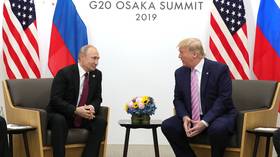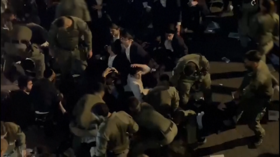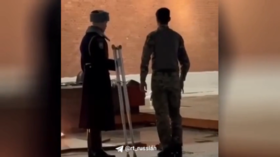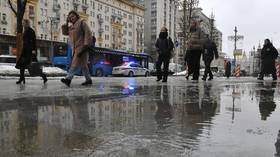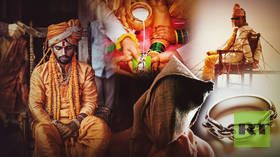Clashes with police claim more lives in Kyrgyzstan
Although the bloody ethnic conflict in southern Kyrgyzstan saw a relative period of calm over the weekend, clashes have resumed on Monday.
Warning: the video contains disturbing images.
Two people have been killed and dozens injured in a shoot-out between police and local residents in a village outside the city of Osh.
The conflict has claimed the lives of 208 people so far.
A curfew and state of emergency remain in place in the region.
The red sun sets on Osh, bringing closure to the bloodiest week in the city’s centuries-long history. With its imposing mountains and fertile valleys, it used to inspire poets and painters. Now its disfigured streets provide a metaphor for the shattered lives of its residents.
Uzbek Nemchan Akhmatakhonov is showing what has left of the house his family owned for three generations. Days after the fire, the ruins are still smoldering, just like his anger at his Kyrgyz neighbors.
“Look at how I’m dressed. I’m afraid to take my jacket off because it’s cold. I don’t have anything else, only what I’m wearing now,” he says.
His house at the very end of an Uzbek enclave saw some of the most brutal fighting. He says snipers hiding in a nearby apartment block killed several of his neighbors.
A Kyrgyz man who fought on the other side of an improvised barricade has a strikingly similar account about snipers on the roof, and stones and iron rods as his only weapons and the utmost viciousness of his adversaries.
For decades, they have lived side by side, going to the same mosques and attending the weddings of their children. Yet, despite good neighborly ties, this conflict featured some the most brutal forms of torture and mutilation. The Kyrgyz and the Uzbeks did not just kill each other; they did it in the ugliest of ways.
Mirlan Makeyev, Kyrgyz resident of Osh, says Uzbeks killed his father despite his sheltering an Uzbek neighbor.
“My father took him from here and that’s where he took him. My father covered him. He held him like that, put a hat over his head and told people not to harm him. So the Kyrgyz did not touch him,” Makeyev says.
But when the Uzbek gangs burst in, no pleas stopped them from slaughter.
Seething with grief and rage at the Uzbeks, the Makeyev family took pins to deliver their neighbor's body back to his relatives, sheltering him again from the fury of ethnic hatred still ruling this city.
Still blaming each other’s ethnicity for starting the riots, the two families joined together in prayer, begging for peace.
Living on different sides of the barricades, the Uzbeks and the Kyrgyz have at least one thing in common: disdain for the interim government, which did not find the wisdom or strength to put out the sparks of ethnic hatred before they turned this city to ashes.


